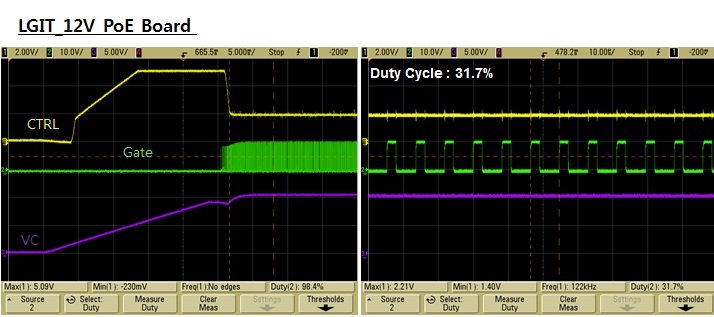Hello
One of my customer is evaluating TPS23753 as gateway. He would like to get 12V output from TPS23753.
He designed the schematics base on TPS23753AEVM-005, However VDD is less than 8V.
Even he changed component to TPS23753AEVM-005 from TPS23753AEVM-003, but VDD is same as his board.
If R22(EVM) or R737(Customer Board) changed to 5.1K, VDD is around 12V, but Power supply current is increasing(It is no load condition)
Please reveiw customer schematics and if you have any idea about this issue, let me konw.
Changing component for EVM
C21 : 47nF -> 15nF
R28 : 348R -> 301R
R22 : 422R -> 2.49K(VDD 7.85V with 3.5mA) & 5.1K (VDD 11.88V with 17.2mA) in no load condition.
R21 : 2K -> 15K
C19 : 10nF -> 6.8nF
U3 : TLV431A -> TL431B (adjust pin map)
R24 : 24.3K -> 3.24K
R19 : 41.2K -> 12.4K
Q1 : IRF8113 -> IRF7855
C12, C13 : 47uF/6.3V -> 10uF/16V
C14 : 330uF/6.3V -> 68uF/25V
T2 : HA3801-AL -> HA3803-BL
Customer Schematics
Gateway_PoE Board_Rev0 1_20141114 (2).pdf


